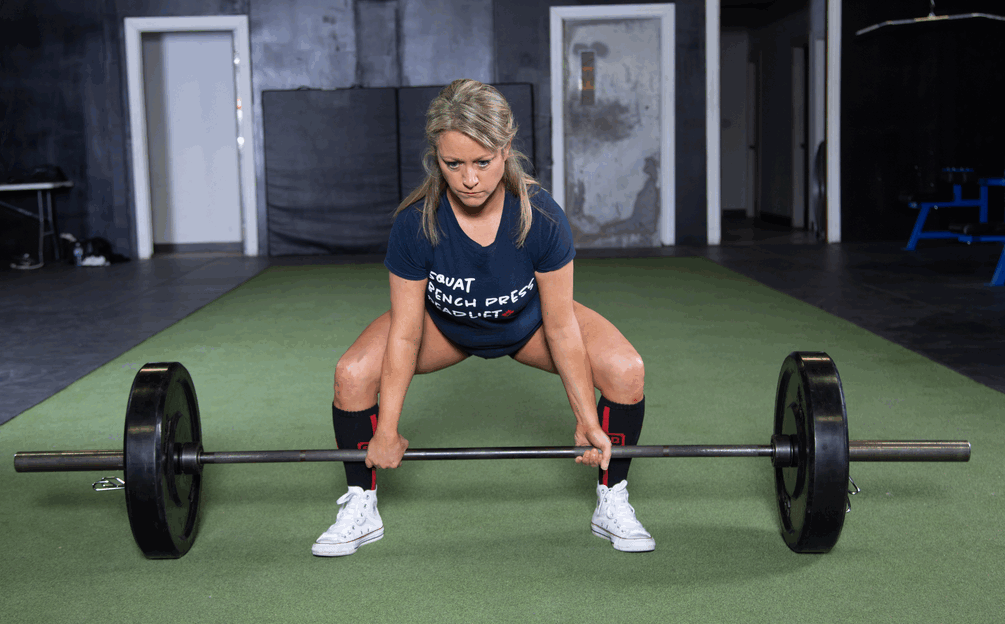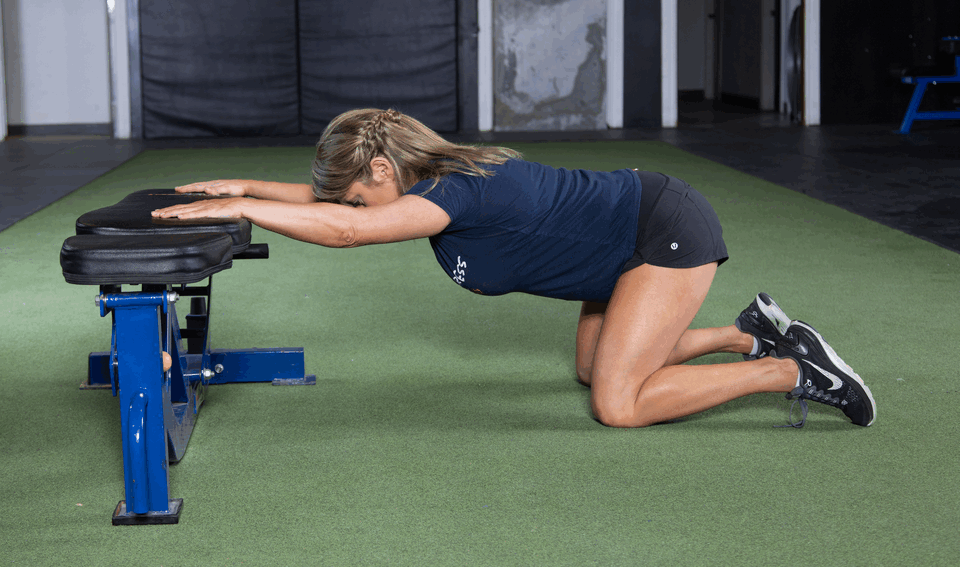For women who want to find their strength in their 40s and beyond
The sport of powerlifting has taken off in the last few years and more and more women are entering the competition. What’s even more amazing: the rookie women in this sport who are 40, 50, 60, and even 70! The strength that these women possess is not just physical. These women are incredible for the bravery, discipline, and pure grit they display as athletes, and I am beyond proud to call some of them my clients, athletes, and friends.
What does it take to become a competitive powerlifter?

Let’s start with what powerlifting is. Powerlifting is a series of three major strength lifts; squat, bench press, and deadlift. In a competition (known as a powerlifting meet), you have three attempts at each lift, and the best attempt (highest weight) in each lift is tallied up for a total in the end. Whoever lifts the most weight in each weight class is crowned the winner.
In order to be a competitive powerlifter, quite dedicated training is required. You must want to lift as heavy as possible, otherwise, this sport likely isn’t for you. However, you may never realize your true strength until you try. It is important to have a coach who is powerlifting specific. You will want them to be able to program your training, provide mobility exercises to address any weaknesses and be able to handle you at meets.
 The training usually consists of four to five days per week of heavy lifting, focusing on your three power lifts (squat, bench press, deadlift), with accessory exercises to help support the development of your strength in those three lifts. When high volume is prescribed in your program, training sessions can be long; expect to be at the gym for 1.5 to two hours. If you despise cardio, this sport might appeal to you, since cardio is rarely part of the program. Powerlifting can take a toll on the body. The training is rigorous so it’s important to have proper dynamic warm-up and mobility protocols to avoid injury. This is especially important for women over 40 years of age.
The training usually consists of four to five days per week of heavy lifting, focusing on your three power lifts (squat, bench press, deadlift), with accessory exercises to help support the development of your strength in those three lifts. When high volume is prescribed in your program, training sessions can be long; expect to be at the gym for 1.5 to two hours. If you despise cardio, this sport might appeal to you, since cardio is rarely part of the program. Powerlifting can take a toll on the body. The training is rigorous so it’s important to have proper dynamic warm-up and mobility protocols to avoid injury. This is especially important for women over 40 years of age.
Many female lifters can not only experience musculoskeletal injuries but also develop pelvic floor issues, especially if they’ve had a baby in the past. Your warm-up will act as a safeguard to help prevent these issues from occurring, as well as prepping the nervous system for the training ahead. Don’t let this scare you; these are common problems for all female athletes and avid exercisers that sometimes can go unnoticed, so it’s simply important to be informed and incorporate a solid dynamic warm-up into your training regimen.
DYNAMIC WARM-UP EXERCISES
 BANDED MONSTER WALK
BANDED MONSTER WALK
Stand with your feet wider than hip-width apart (in sumo stance), with your toes pointed out. Get into a squat position and walk forward 20 steps, then backward.
Activates the muscles in your glutes and hips.
LEG SWING (FRONTAL PLANE AND SAGITTAL PLAN)
Hold on to a post and swing your legs front to back then side to side, five to 10 swings each leg.
Mobilizes your hips.
DEEP SUMO SQUAT
Stand with your feet wider than hip-width apart, your feet at 45 degrees. Relax down into a squat as low as you can go. Allow your lower back to round if necessary. Hold for 30 seconds. Decompresses your spine, increases ankle mobility, and helps to stretch pelvic floor muscles.
CAT-COW
Position yourself on your hands and knees with your toes tucked. Slowly extend and flex your spine, initiating each movement at your hips. Complete 10 reps.
Increases the flexibility mobility of your neck, shoulders, and spine, and stretches your pelvic floor muscles.
 BAND SHOULDER DISLOCATE
BAND SHOULDER DISLOCATE
Stand upright with a tight core and retract your shoulders; keep your elbows and wrists straight while rotating a band over your head from front to back complete 10 reps. Increases shoulder mobility.
 LAT PROPRIOCEPTIVE NEUROMUSCULAR FACILITATION (PNF) STRETCH
LAT PROPRIOCEPTIVE NEUROMUSCULAR FACILITATION (PNF) STRETCH
Position your knees on the floor with your hands on a bench or box. Contract your lats and push your arms down into a bench. Hold for 10 seconds. Relax and repeat five times.
Help to increase flexibility and strength in your lets.
Photos By @CHRISVLINTON


 BANDED MONSTER WALK
BANDED MONSTER WALK




 BAND SHOULDER DISLOCATE
BAND SHOULDER DISLOCATE LAT PROPRIOCEPTIVE NEUROMUSCULAR FACILITATION (PNF) STRETCH
LAT PROPRIOCEPTIVE NEUROMUSCULAR FACILITATION (PNF) STRETCH













